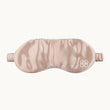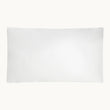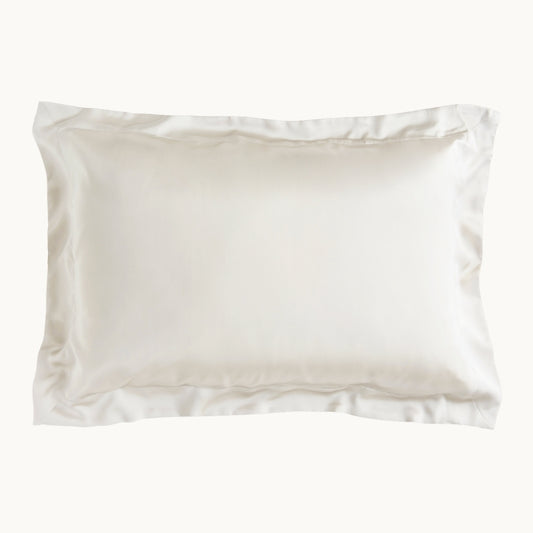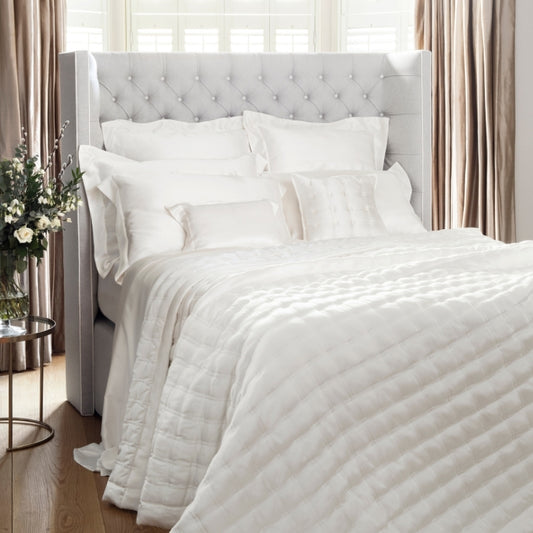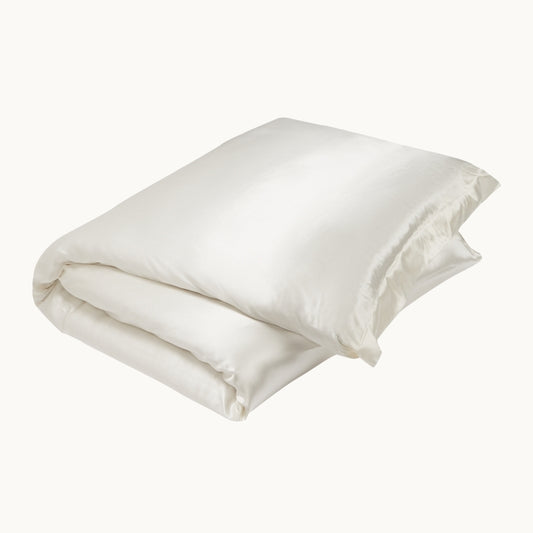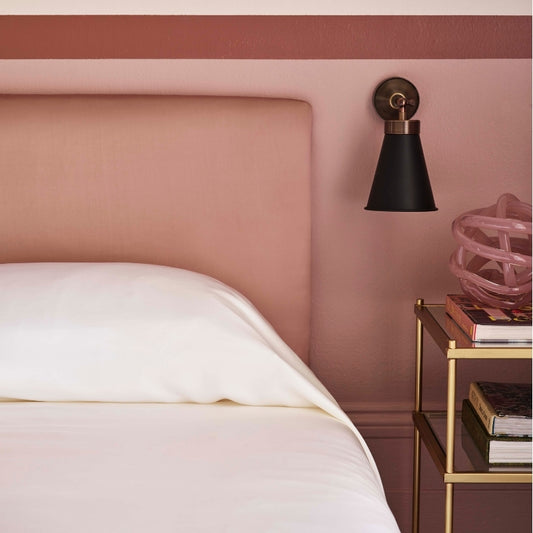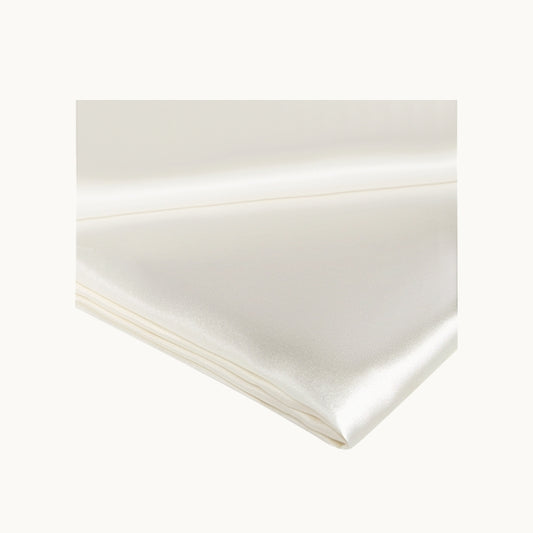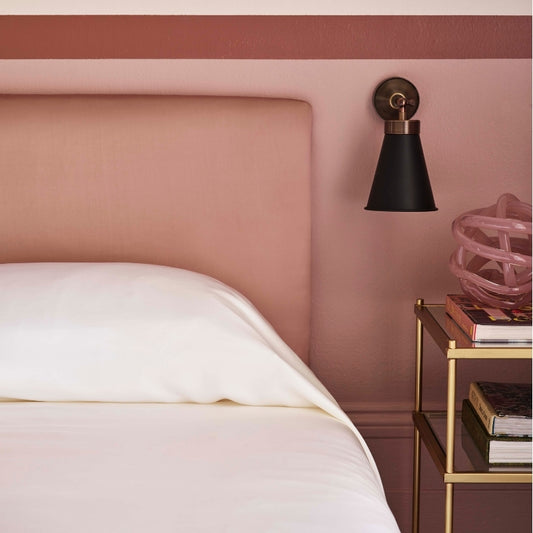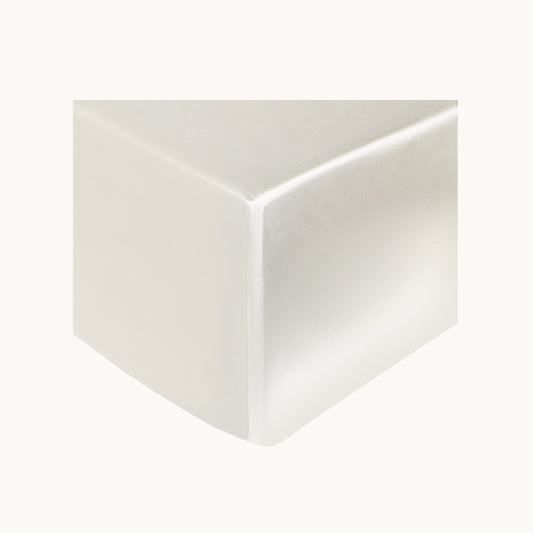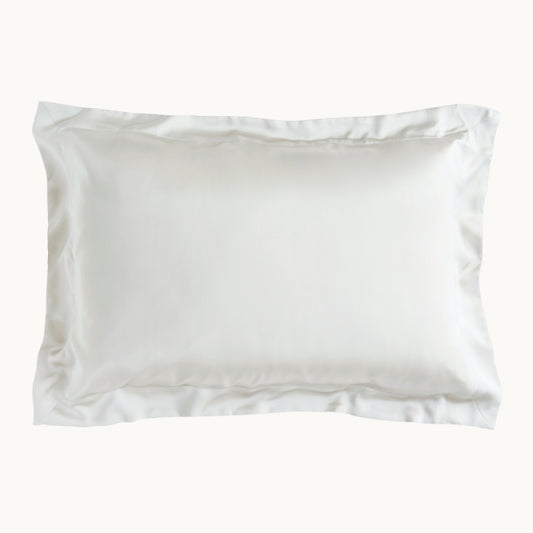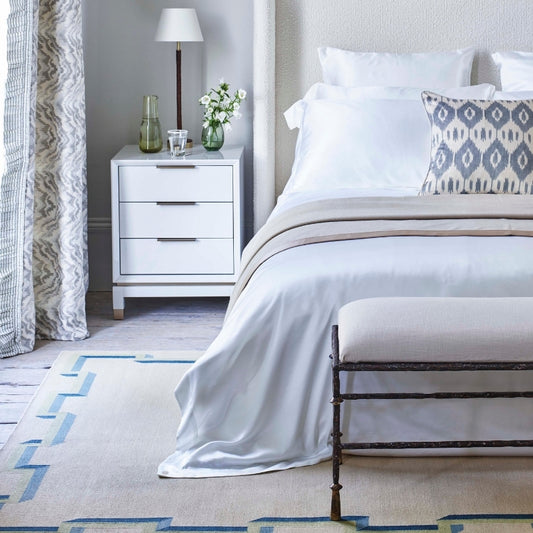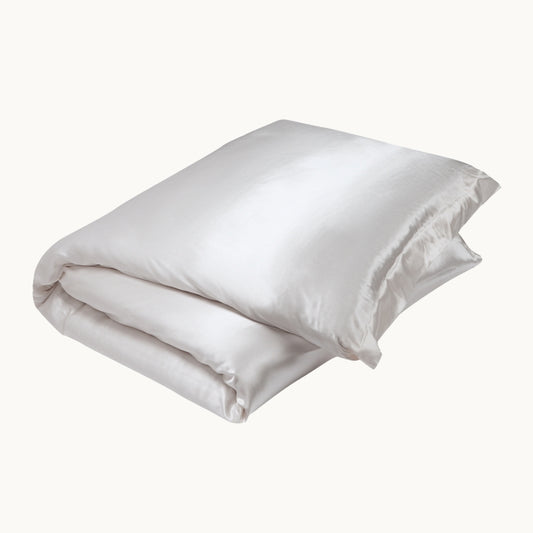Long-considered one of the world’s most highly sought after and luxurious materials, mulberry silk has a fascinating origin story to go alongside the countless natural benefits that have made it a popular choice amongst designers and high-end fashion enthusiasts. Demonstrating intricate craftsmanship, the process of creating and weaving this silk plays a large part in why this material has been so admired for centuries, and how it has grown to be so widely loved and traded through history....
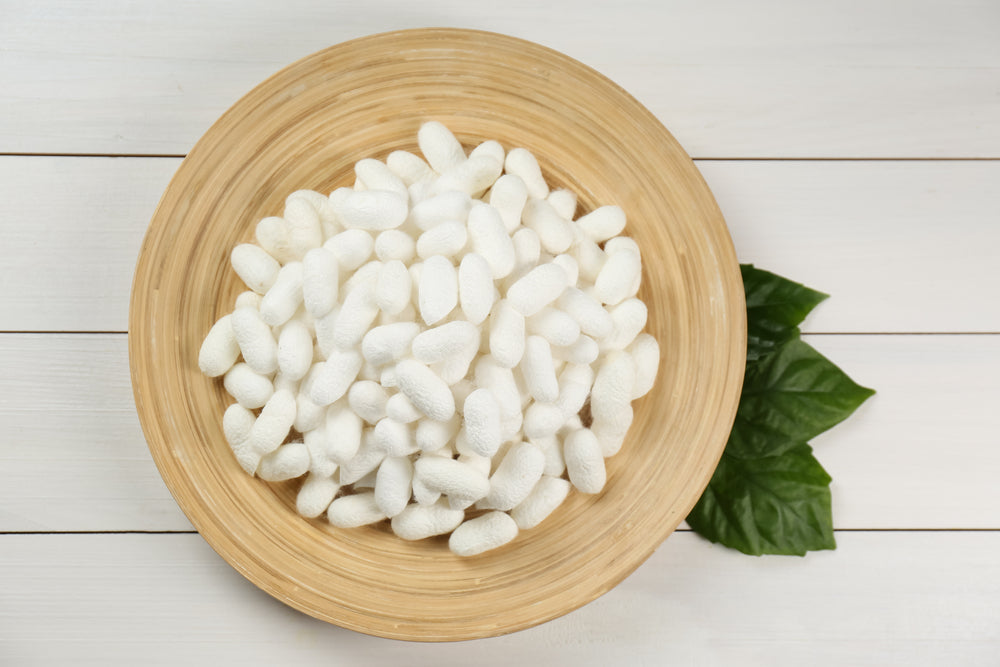
Gingerlily’s Complete Guide to Mulberry Silk
Posted on 05 July 2024Long-considered one of the world’s most highly sought after and luxurious materials, mulberry silk has a fascinating origin story to go alongside the countless natural benefits that have made it a popular choice amongst designers and high-end fashion enthusiasts. Demonstrating intricate craftsmanship, the process of creating and weaving this silk plays a large part in why this material has been so admired for centuries, and how it has grown to be so widely loved and traded through history.
Today, mulberry silk is what you see in all of our beautiful products, its signature sheen and softness giving all of our silk bedding and accessories their luxury feel. If you’re curious to learn more about the processes behind mulberry silk and why this type of silk is one of the highest quality options available, keep reading as we explain everything from what mulberry silk is and how it was discovered, to how it is used in the home decor and fashion industries in the modern day.
What is mulberry silk?
Mulberry silk is one of the finest quality silks, and it comes from the cocoons of the bombyx mori moth. It takes its name from the fact that this species of moth is fed exclusively on the leaves of the mulberry tree. The material is regarded as one of the most luxurious, offering an unmatched softness and a stunning silk sheen, and as such it is often used to create bedding, dressing robes, and high-fashion clothing.
Origins of mulberry silk
The story of mulberry silk starts in China over 5000 years ago. Legend states that the process was uncovered when a silkworm cocoon fell into the tea cup of empress Si Ling Chi as she was sitting under a mulberry tree. Instead of removing the cocoon from the cup, she watched as it dissolved and laced the tea with a remarkable shimmer. Inspired by the shine, she went on to develop what is known as sericulture (the production of silk) and learned how to collect these filaments, test their strength, and weave them into garments. This process remained shrouded in mystery for thousands of years, closely guarded by China as a valuable commodity that enabled the ancient silk trade.
Over time, production became more widespread across East Asia, which ultimately led to a boom in popularity in the 13th century as Italian traders imported the material to Europe. Soon, silk production factories popped up on the continent that served nobles and royals, and by the 15th century the traditional silk road started to decline. Today, many countries are able to craft mulberry silk but the product remains a luxury material.
How is mulberry silk made?
Despite thousands of years passing since the first discovery of silk, the process of making silk remains largely the same. At around 5-6 weeks, the moth larvae start to build a cocoon made from long individual strands of fibre. Once the cocoon is complete, these strands are then unravelled and carefully woven into the material that we know as silk. Because the bombyx moth is fed solely on mulberry leaves, this is an entirely natural process which generates second-to-none quality, but dyes may be used at a later stage to add colour to the silk.
Can mulberry silk be harvested in any other way?
Yes. Traditionally, the mulberry silk production process requires that the silk cocoons be boiled whole in order for the strands to unravel. The moths sadly don’t survive this process, but the alternate method, in which the moths leave the cocoon 10 days later than the silk would traditionally be harvested, is not widely practised. This is because this method yields much less silk, and is even more labour intensive which means that ‘peace silk’, as it is known, is almost double the price of regular mulberry silk.
It should be noted though that both methods of crafting mulberry silk are classed as environmentally-friendly, as the process doesn’t utilise synthetic dyes, fabric blends, or harmful technology as other materials might. Where land is required, mulberry trees are planted which can help to absorb excess CO2 and provide food and shelter for other wildlife. This is because these trees do not only produce leaves, but berries that are rich in vitamins and minerals.
Why is mulberry silk so expensive?
Mulberry silk fabric is an expensive buy, but for good reason. The delicate process of crafting it is time consuming and labour intensive. To help put this into perspective, it takes roughly 2000 cocoons to make just 1 lb of mulberry silk. To produce the finest quality silk, the larvae need to be fed mulberry leaves only, before the threads are carefully extracted, cleaned, and woven.
Additionally, this type of silk is one of the finest and strongest. It has an exquisite and opulent feel as well as a lustrous sheen, which makes it highly sought after. Naturally, it also presents plenty of benefits including being hypoallergenic and repellent of dust mites as well as bacteria. This makes it a popular choice for high end bedding and clothing. You can read more about these benefits with our ‘can silk make a difference to your sleep?’ blog.
Does mulberry silk require special care?
Yes, if you own mulberry silk products, there are a few extra steps you’ll need to take to ensure that your product is kept looking its best. For example, you should never hang it in direct sunlight, or place it in a tumble dryer. However, it isn’t necessary to take it to a specialist dry cleaner every time you want to wash your silk, you simply need to wash at low temperatures and use designated detergent. You can read more detailed care instructions on our how to wash silk page.
What products can be made with mulberry silk?
Traditionally, mulberry silk was used to make religious and spiritual pieces alongside luxury clothing for nobility. Today, it is more common to see it used in bedding and nightwear. All Gingerlily products are crafted with the highest grade mulberry silk, which means you can purchase silk bed linen, robes, and even travel accessories. To highlight the versatility of how mulberry silk fabric can look and be applied to different high-end accessories, we’ve selected a few of our favourites.


Harlem Toile Ivory Silk Robe £345 | Green Silk Eye Mask £50
The silk robe and eye mask combination is perfect for those who like to indulge in luxury and who want to recreate a spa-like feeling at home. These two items envelope your skin in a delightful softness that can promote healthier skin and a more blissful rest when travelling or at night.

Summerhill Blue Bedding Collection from £105
Alternatively, mulberry silk bedding has a way of effortlessly transforming your bedding set up to ensure that you are kept comfortable and cool throughout the night, lulling you into a deep slumber and leaving you feeling refreshed. This is also ideal for those who like to add depth and texture to their design scheme, and those who prefer a more up-market look.
Discover the magic of mulberry silk with Gingerlily
There’s no wonder why after thousands of years, mulberry silk continues to be one of the most revered fabrics. No longer exclusive to royalty and nobility, this fabric can help add an opulent feel to any interior design scheme, bringing plenty of benefits to those wearing and sleeping in this sumptuous fabric.
At Gingerlily, each of our products has been expertly and carefully crafted using high-grade mulberry silk which offers comfort, longevity, and unparalleled style. Browse through our mulberry silk pillowcases, bedding and accessories and explore the benefits of mulberry silk at home.
